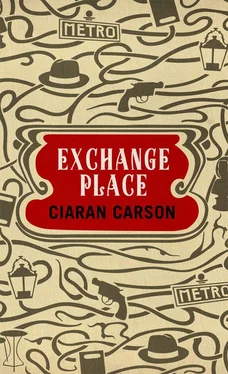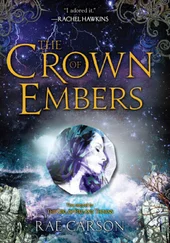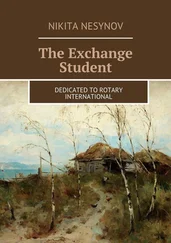The day before yesterday, on a whim, he had gone into an ‘Irish’ bar called the James Joyce. He stood at the bar counter and ordered a John Jameson’s and had taken a sip when a red-faced man at the other end of the bar came over to him and said, Nice coat. The man’s accent was educated English. He was ever so slightly drunk. He was carrying a black briefcase. Nice coat yourself, said Kilpatrick. The man’s coat was standard Hugo Boss issue and at least one size too big for him. Haven’t I seen you somewhere before? said the red-faced man, I swear I saw you on Boulevard Raspail the other day. Kilpatrick did not think he had set foot on Boulevard Raspail since he arrived in Paris, and said so. Well, said the man dubiously, then it was a look-alike, same hat, same coat, same scarf. He looked down at Kilpatrick’s feet. Same briefcase, he said, funny old world, isn’t it? The man extended his hand. Freddy Gabriel, he said, British Council. John Kilmore, said Kilpatrick, on a sudden whim, and they shook hands. They talked, and Kilpatrick told Gabriel he was in Paris looking at shirting fabrics, he was setting up a bespoke shirt business in Dublin. He found himself talking knowledgeably about collars, plackets, cuffs, the provenance of linens and cottons. He almost believed himself.
In the morning Kilpatrick took the lift down. Unlike the night before, it had come when summoned. He was about to go into the breakfast room when the concierge came over to him. Mr Kilpatrick? A letter for you. She extended an envelope. Kilpatrick was puzzled. So far as he knew, no-one knew he was in Paris, let alone in Hôtel Chopin. He looked at the envelope. Expensive, thick wove paper. It bore the words, By Hand , underlined twice, and his name, John Kilpatrick , written with fountain pen in an elegant italic hand that was unfamiliar to him. He opened the envelope. A sheet of matching notepaper, an old-style French latchkey. Dear John, he read, If you go to 41 Rue du Sentier Thursday night at seven o’clock you will find something to your advantage. Trust me. Enclosed find the key. From one John to another, I am, yours truly, John. Kilpatrick went over to the concierge and enquired if she had seen the bearer of the letter. No, it was in Monsieur’s pigeonhole — le casier — when she took over from the night porter that morning. Kilpatrick put the envelope with its contents into his briefcase. Over breakfast he looked at the letter, turning the key in his hand, pondering its import. It was Tuesday. He decided to put the affair on the back burner, what was the expression? Mettre en veilluese .
He would begin that morning with a stroll through Passage des Panoramas, whose entrance lay immediately opposite Passage Jouffroy, on the other side of Boulevard Montmartre. He planned to write an extensive piece on the Paris arcades, quoting extractsfrom Walter Benjamin’s The Arcades Project . Kilpatrick had transcribed some of these into an A5 notebook. Benjamin’s The Arcades Project was itself one huge notebook, transcribed from many notebooks, originally organised by topic into sheaves or ‘convolutes’, with passages sometimes repeated, sometimes redrafted or revised in only marginally different forms, interspersed with citations from an array of nineteenth century authors, but also from the work of key contemporaries — Marcel Proust, Paul Valéry, André Breton, Ernst Bloch, Theodor Adorno, among others, until citation eventually outnumbered Benjamin’s own commentaries, and the distinction between Benjamin’s words and the words of others became more and more blurred, voices refracted through the medium of Benjamin’s mind. He saw Paris as the capital of the nineteenth century. His book was a dream representation of Paris itself, images and phrases intertwining in a vast fugal architecture, echoing rooms and galleries of language. Kilpatrick opened his notebook at random and read:
‘One knew of places in ancient Greece where the way led down into the underworld. Our waking existence is like a land which, at certain hidden points, leads down into the underworld — a land full of inconspicuous places from which dreams arise. All day long, suspecting nothing, we pass them by, but no sooner has sleep come than we eagerly grope our way back to lose ourselves in the dark corridors. By day, the labyrinth of urban dwellings resembles consciousness; the arcades, which are galleries leading into the city’s past, issue unacknowledged onto the streets. At night, however, under the tenebrous mass of the houses, their more compacted darkness bursts forth like a threat, and the nocturnal pedestrian hurries past — unless we have emboldened him to turn into the narrow alley.’
Another entry, headed ‘Blanqui’: ‘There exists a world where a man follows the road that, in the other world, his double did not take. His existence divides in two, a globe for each; it bifurcates a second time, a third time, thousands of times. He thus possesses fully formed doubles with innumerable variants, which, in multiplying, always represent him as a person but capture only fragments of his destiny. All that one might have been in this world, one is in another. Along with one’s entire existence from birth to death, experienced in a multitude of places, one also lives, in yet other places, ten thousand different versions of it … The number of our doubles is infinite in time and space. These doubles exist in bone and flesh — indeed, in trousers and jacket, crinoline and chignon. They are by no means phantoms; they are the present eternalized.’
As he emerged from Passage Jouffroy into Boulevard Montmartre, Kilpatrick considered the fact that this sunlit Paris was not all there was to Paris. Beneath his feet lay a subterranean otherworld of stairways, hallways, portals, tunnels, quarries, pillars, archways, bunkers, cellars, dungeons, roadways, wells, mines, caves, chambers, caverns, crypts, catacombs, vaults, grottoes, galleries of human bones, dead city layered upon dead city, infiltrated by the living. He was walking over an invisible abyss. He crossed the boulevard and entered the portal of Passage des Panoramas.
Good trick, Bill, I said. Magic. Always a pleasure to do business, Ben, said Beringer. These were not our real names. He was John Beringer, I was John Kilfeather. We used to call each other John until one night after a smoke of Red Leb — how many years ago was that, Red Leb? — he came out with, Flobbalob, Little Weed. The Flower Pot Men . We spent a good hour trying to remember the children’s TV series of the 1950s and 60s. I’ve just looked it up online, and I here transcribe the Wikipedia entry:
‘Originally, the programme was part of a BBC children’s television series titled Watch with Mother , with a different programme each weekday, and all involving string puppets. The Flower Pot Men was the story of two little men made of flower pots who lived at the bottom of an English suburban garden. The plot changed little in each episode. The programme always took place in a garden, behind a potting shed. The third character was Little Weed, of indeterminate species, resembling a sunflower or dandelion with a smiling face, growing between two large flowerpots. The three were also sometimes visited by a tortoise called Slowcoach. While “the man who worked in the garden” was away having his dinner the two Flower Pot Men, Bill and Ben, emerged from the two flowerpots. After a minor adventure a minor mishap occurs; someone is guilty. “Which of those two flower pot men, was it Bill or was it Ben?” the narrator trills, in a quavering soprano; the villain confesses; the gardener’s footsteps are heard coming up the garden path; the Flower Pot Men vanish into their pots and the closing credits roll. The final punch-line was, “And I think the little house knew something about it! Don’t you ?” ’
Читать дальше












